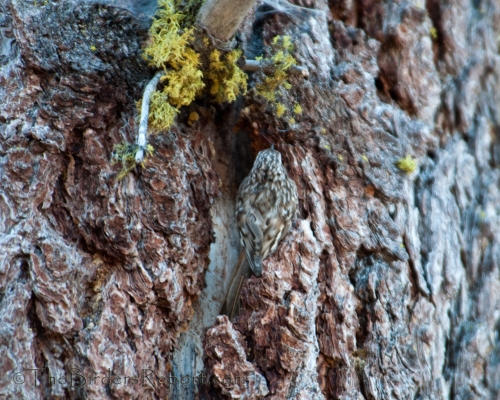 Brown Creeper (Certhia americana) photos by Larry Jordan
Brown Creeper (Certhia americana) photos by Larry Jordan
Last weekend was the annual camp out at Lassen Volcanic National Park for the Wintu Audubon Society and I was thrilled to get to watch a pair of Brown Creepers (Certhia americana) feeding their nestlings. Above is the adult approaching the nest site (click on photos for full sized images).
It was not until 1879 that naturalists discovered that the Brown Creeper builds its hammock-like nest behind a loosened flap of bark on a dead or dying tree. The nest is built in 2 parts, base and nest cup, behind a piece of peeling bark.
Base materials consist of twigs and strips of bark layered together. Insect cocoons and spider-egg cases adhere base materials to each other and to the rough inner surface of the bark. The nest is not attached to the trunk. The hammock-shaped base has “horns,” or points that can extend several centimeters above the nest, giving the appearance of a “well-filled crescent.” These points are attached firmly to the inner surface of the bark and probably provide support. The nest cup lies in the center of the base and consists of fine pieces of bark and wood fibers, spider-egg cases, hair, feathers, wood chips, grass, pieces of leaves, lichens, and mosses1. You can see it at the very bottom of this crevice.
They usually lay five or six eggs in the clutch but we only saw two nestlings while we were there. Here is one of them peeking out from the top of the opening above the actual nest.
We were so thrilled to be able to watch the nestlings emerge from behind the thick bark covering. We stood there and soaked it all in.
We watched as the nestling creeped out of the crevice…
and made its way to the side of the snag…
where one of the adults came, I thought, to feed it.
But when I looked at the photos later, I didn’t see anything in the adult’s beak.
The parent bird flew off as the nestling moved further away from the nest site, toward the other side of the tree. The adult flew back a few minutes later to the nestling, out of our sight on the back side of the tree, presumably to feed the youngster.
A few minutes later, an adult showed up back at the nest site.

There was still a nestling in the nest that the adult appeared to be bringing food to.
As the adult looks down into the nest, you can see the nestling’s tail at the bottom of the frame, above the top of the nest itself.
Then the parent goes down into the nest, presumably feeding the remaining chick or chicks still in the nest.
I went back to the nest the next morning hoping to get closeup shots with the digiscope but as I had suspected, what we were watching was the fledging of the nestlings from the nest.
After all, the adults were enticing the nestlings out of the nest and coming back to the tree every few minutes. This is the typical means of most birds to force their young to fledge, of course they do keep feeding the young that remain in the nest also. The Brown Creeper nestlings fledge when 14 to 17 days old. I’m glad I was there to see it!
Now, make sure you check out all the other cool posts at World Bird Wednesday!
References: 1 Birds of North America Online


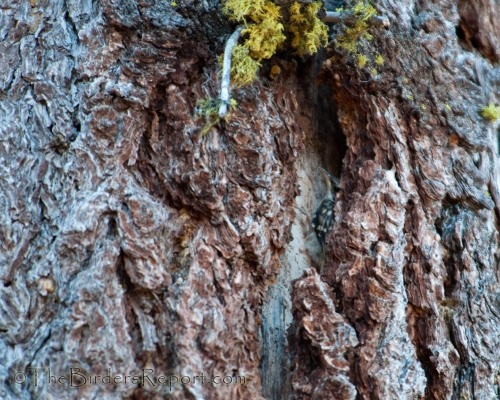
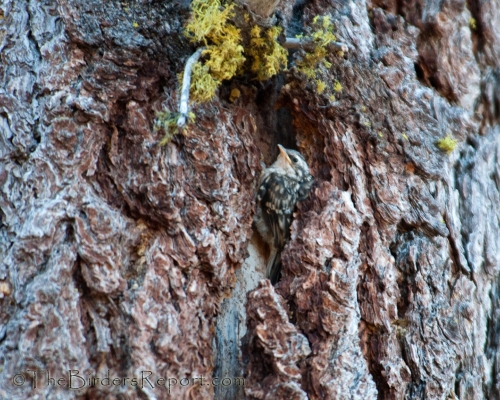
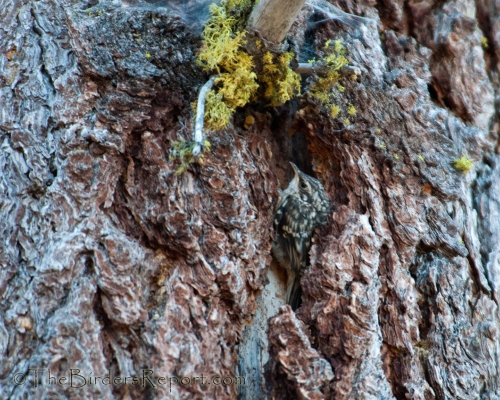
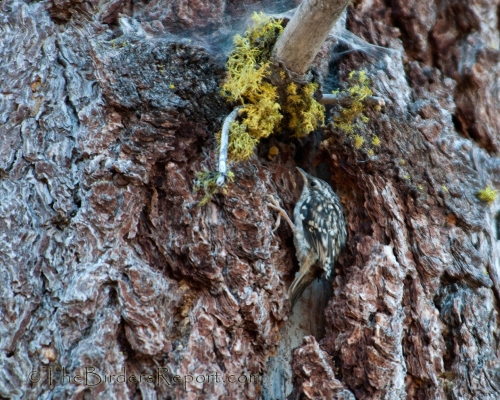
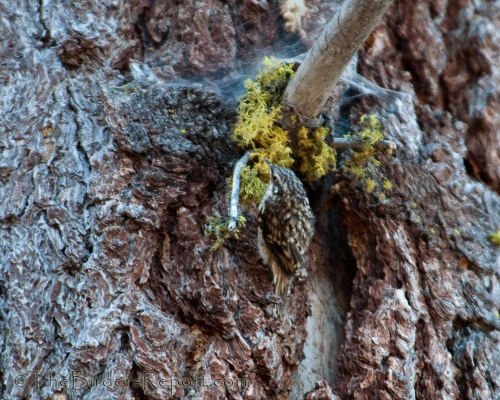
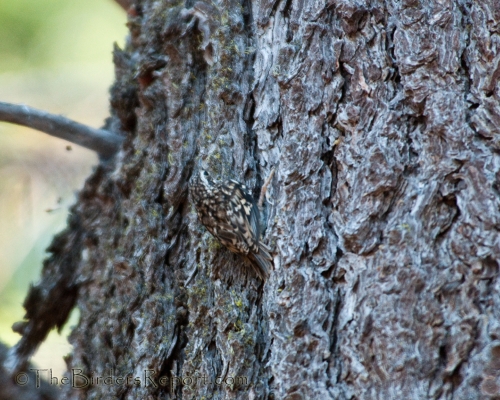
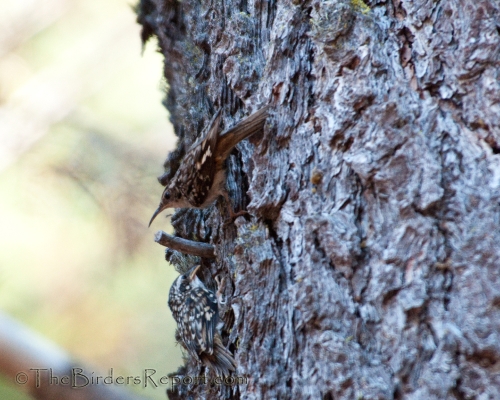
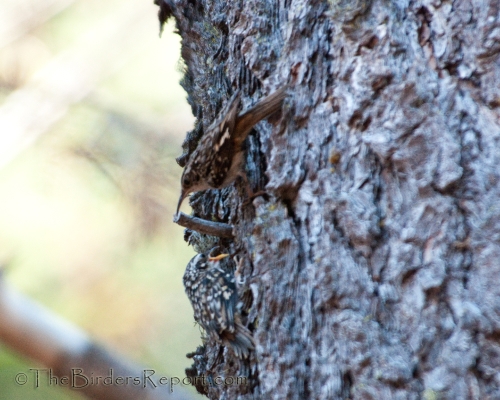
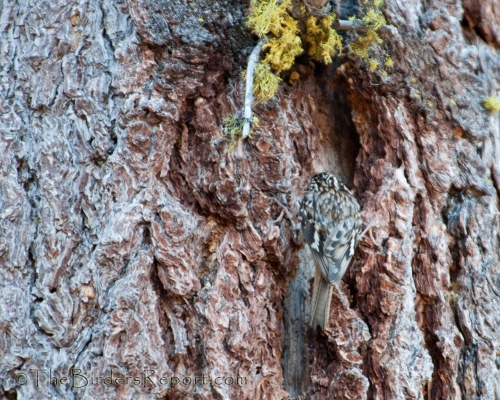
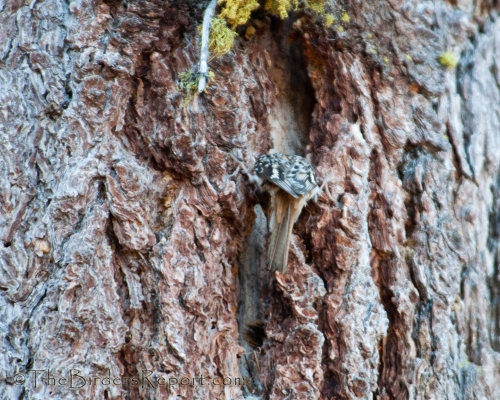
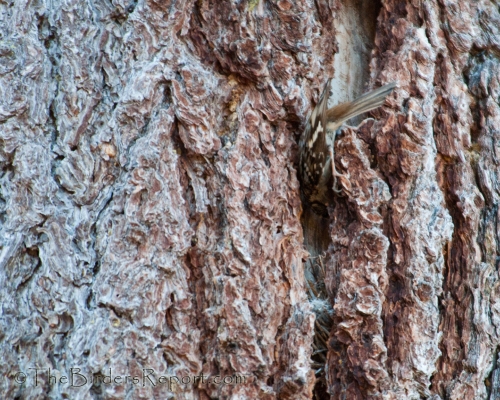








Comments on this entry are closed.
Great series of captures.
Very similar to our Treecreeper here.
Great series good camouflage.
To see the birds is rare and difficult enough, but to find their nests and watch the young fledge, that’s wonderful!
A wonderful set of images… a lovely little relation to our Treecreeper in the UK
@Keith thanks! It is the only creeper species in North America
@Neil they certainly are well camouflaged aren’t they
@Theresa I was lucky in that the park ranger happened to pass by while we were standing there and pointed out the nest to us!
@Andrew thank you. I have always found the Brown Creeper to be a great find when I’m out birding
Wow, very cool. What a great find! I love the cute creeper.
Larry, This post has moved me to tears. Thanks for sharing your experience!
What an astounding set of shots, Larry! I’ve never heard of these beautiful little birds. I do love how they’re camoflagued to meld with the bark!
You have to love when life puts you in a position to capture something this magical…
What a marvel to see Larry! Thanks be to your discerning eye. I really had to stare at these to take it all in. Totally amazing!
Great series of photos! A master of camouflage!
Great series Larry. Boom & Gary of the Vermilon River, Canada.
A great series of photos. The nest site and building is amazing – it is so well hidden.
Great series Larry..I bet it was so much fun watching this!
Cool pix and great info about their nest building, Larry!